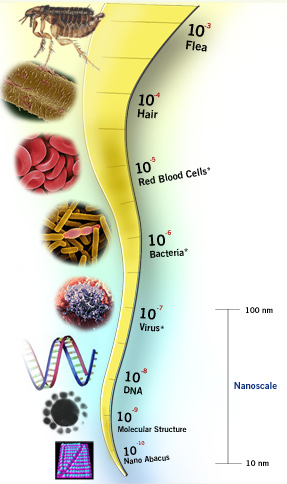 One of the missions of the Arkansas Discovery Network is capacity building at the partner museums, to improve upon what they offer the public. One way we do that is with Educator Workshops. A few weeks ago educators from around the Network got together at the Museum of Discovery to learn how to better present Nanotechnology to their visitors. Educators from each museum shared what has worked and hasn’t worked as far as teaching Nano to the public, and especially children in the younger grades who present a special challenge with this sometimes hard-to-comprehend subject.
One of the missions of the Arkansas Discovery Network is capacity building at the partner museums, to improve upon what they offer the public. One way we do that is with Educator Workshops. A few weeks ago educators from around the Network got together at the Museum of Discovery to learn how to better present Nanotechnology to their visitors. Educators from each museum shared what has worked and hasn’t worked as far as teaching Nano to the public, and especially children in the younger grades who present a special challenge with this sometimes hard-to-comprehend subject.

Jill Kary, from Arkansas State University Museum in Jonesboro summed up the biggest benefit from the network workshops: “Hearing the ideas of others who work with Nano was extremely helpful.”
The network is a part of a national network called NISEnet, which has provided partners with the Nanotechnology: What’s the Big Deal traveling exhibit and NanoDays activities kits, as well as unlimited free resources on it’s website, nisenet.org and a workshop for museum educators around the country.

Two representatives from NISEnet and the Children’s Museum of Houston, Keith Ostfeld and Aaron Guerrero were on hand to share their experiences and explain the new NanoDays kits that many of the partners have received this year and in years past.
Mindy Porter from Mid-America Science Museum attended the nano workshop put on by NiseNET and shared what she learned with fellow educators. She said this about the network workshop: “I enjoyed hearing ideas from my fellow AR museum educators. I also learned a lot when Keith showed us the Nano Days kit activities. It was great to hear the extra ideas and tips on how to make the activities extra special.”
Brenda Hengel added, “The best part was actually spending time with Aaron and Keith – putting faces to names. It’s great to have them as a Nano resource! Always good to go over what Nano is and isn’t for review. And hearing Mindy’s presentation on her Nano trip to San Francisco was a plus.”
Along with Keith and Aaron, Gled Rexha and Enka Dervishi from the Nanotechnology Center at the University of Arkansas at Little Rock shared their views from actually working with Nanotechnology and museum programs they have held.

Hearing from people actually working in the field is very important to those trying to teach. As Alice Penrod, of Texarkana Museums System, said “Hearing the ideas of others who work with Nano was extremely helpful.”
We are planning to publish several nanotechnology experiments to try at home to make this topic more simple to understand and to show it’s real-world applications. We have one blog entry already explaining the smallness of this big topic. Stay tuned for more!
You can see more pics of the network’s Nanotechnology Educator’s Workshop on our flickr page!


 So, if you can’t see a nanometer and you need special tools to “feel” them and work with them, just how small is it? It’s a hard concept to grasp, so hopefully this activity will give you a better idea.
So, if you can’t see a nanometer and you need special tools to “feel” them and work with them, just how small is it? It’s a hard concept to grasp, so hopefully this activity will give you a better idea.